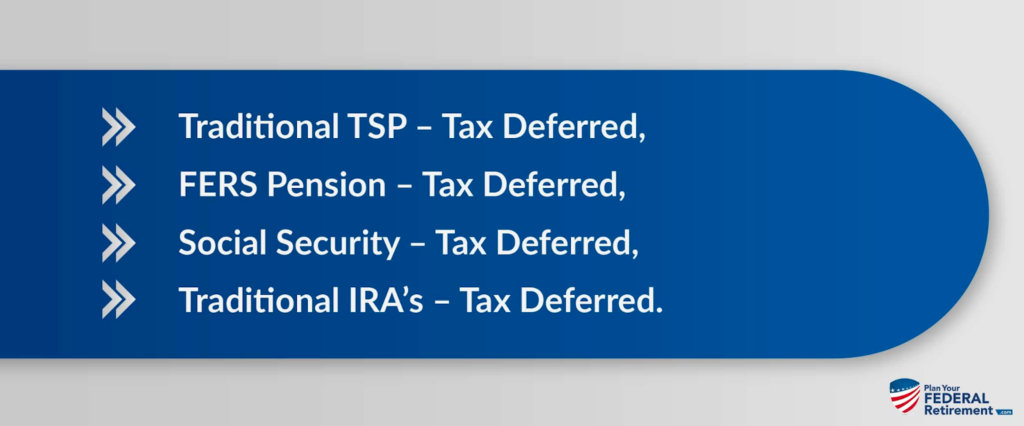“I’m just about 65 and make about 125K a year working for the federal government. I plan to retire in five years when I’m 70. I want to convert a large part, maybe all, of my TSP, which is over $500,000, to a Roth IRA and I want to do that over the next five years in the most tax-advantaged way possible. When I take, say, $50,000 out of my thrift savings plan to put into a Roth IRA, can I use 22 percent of that $50,000 to pay to the IRS, or do I have to put all $50,000 into the Roth IRA?” – Gary.
Inflation in retirement is what most retirees tell us they are worried about, and while important, inflation is not the top concern that most financial advisors have about their clients retirement.
Taxes will make or break a retirement for a federal employee.
Federal Employees need to have a ten-year tax plan in place before they retire so they understand how and when to withdraw money from their retirement accounts without having most of it go to the IRS.

Your retirement benefits as a federal employee consist of your FERS pension, TSP, and social security benefits which are often taxable sources of income each year.
Gary is already designing his ten-year tax plan to optimize his retirement plans by deciding how and when he will convert his traditional TSP to ROTH Individual Retirement Arrangement.
TSP to ROTH – How Transfers Happen
The Thrift Savings Plan (TSP) allows federal employees to contribute via payroll deductions. Your voluntary payroll deductions can be categorized into either:
Pre-Tax or,
Post-Tax.
The pre-tax account is often referred to as the “Traditional” and the post-tax as the “ROTH” component.
The Thrift Savings Plan (TSP) is an employer-sponsored retirement plan, so some rules are associated with how your contributions and withdrawals work.
Those rules can have considerable penalties and/or income tax qualifications upon withdrawal, so you will want to understand how they work before taking any money out.
How to get TSP money into a ROTH
The TSP is an employer-sponsored plan and therefore has plan limitations.
The TSP does not allow for in-plan ROTH conversions. You can not take money from the traditional TSP and convert it to the TSP ROTH account.
However, you can convert TSP funds into a ROTH Individual Retirement Arrangement (IRA).
Individual Retirement Arrangement (IRA) can be either tax-deferred or tax-free. If an IRA is tax-free, it is called a ROTH IRA, named after Senator ROTH for introducing and advocating for tax-free retirement accounts.
When you make contributions to a tax-deferred account, you defer taxes until later. You are allowed to defer those taxes until you reach the age of the Required Minimum Distributions imposed by the Internal Revenue Service. At that time, or when you make a withdrawal, the money that comes out of those accounts will be taxed at your current tax rate. Most people believe that in retirement, their taxes will be lower because their income is lower. This is not always the case. Taxes can go up in the future regardless of whether or not you are working or retired.
When you make contributions to a tax-free account, your deposit money is taxed today at your current tax rate. When you withdraw the money later, providing you meet the eligibility requirements, those distributions and their earnings are tax-free.
Money put into a tax-deferred IRA can be converted to a tax-free IRA at any time. When you do so, the money you convert is added to your current taxable income for the year in which the conversion occurs.
For Gary to convert his Traditional TSP funds into a ROTH, he must first transfer the intended amount to a Traditional IRA.
Only funds inside a Traditional IRA can be converted to a ROTH IRA.
- Step 1: transfer TSP funds to a traditional IRA.
- Step 2: run an estimated tax projection for the year on the amount you want to convert as it will be added to your income and taxed at your current tax rate.
- Step 3: convert via transfer funds from the traditional IRA to the ROTH IRA.
- Step 4: make your estimated tax payment on the conversion.
- Step 5: withdraw your funds tax-free, providing you meet the rules regarding withdrawals from your ROTH IRA.
Converting retirement savings to a ROTH while working depends on your tax tolerance. If Gary has run a tax projection on the conversion and feels comfortable adding the additional income to his current tax liabilities, he can begin converting while he is still working.
At age 65, Gary will also want to convert as much as possible to tax-free accounts before he reaches the age of required minimum distributions. Remember that while many Federal Employees like to wait until retirement to begin converting their TSP to a ROTH, your retirement income as a federal employee may be higher than you think: most of your pension and social security is taxable.


